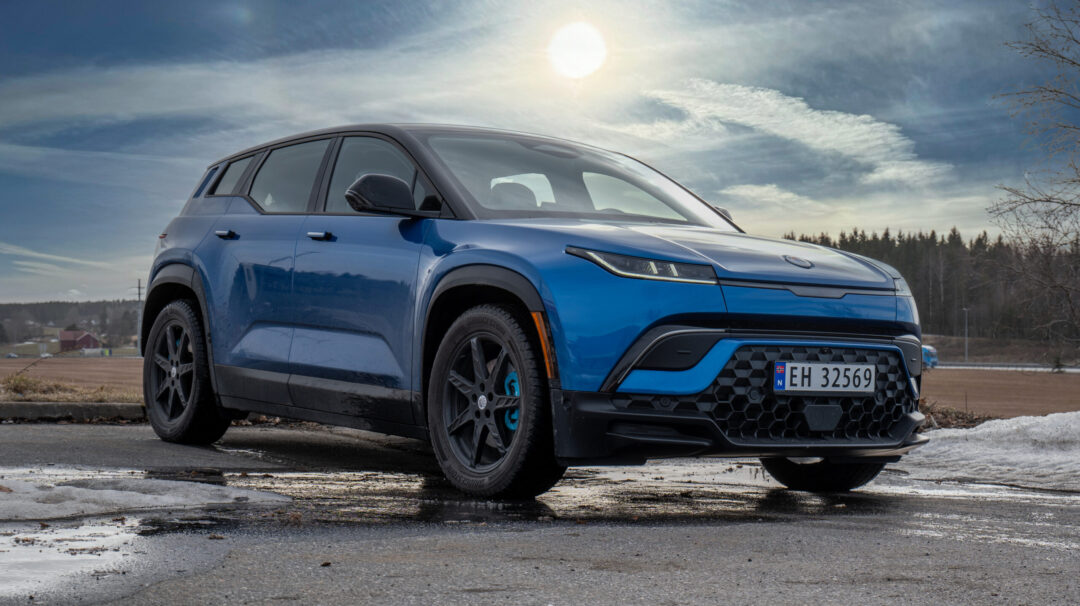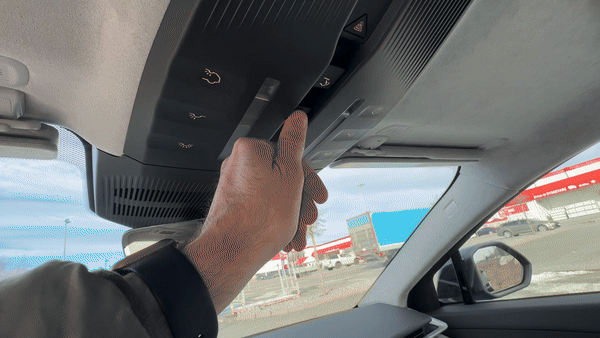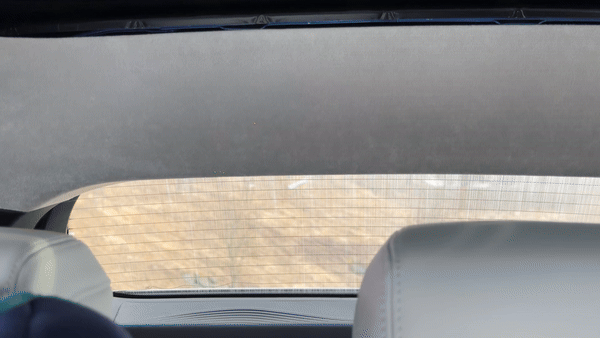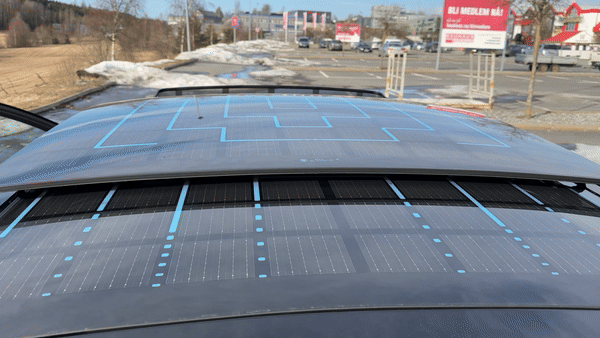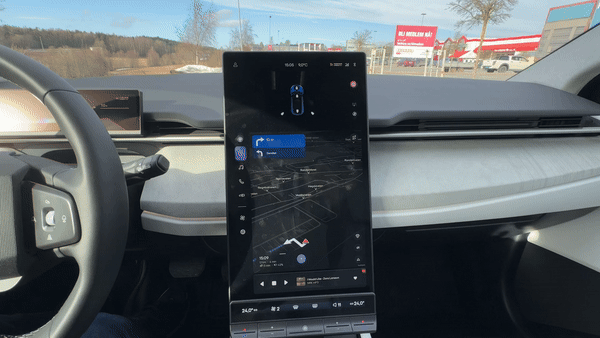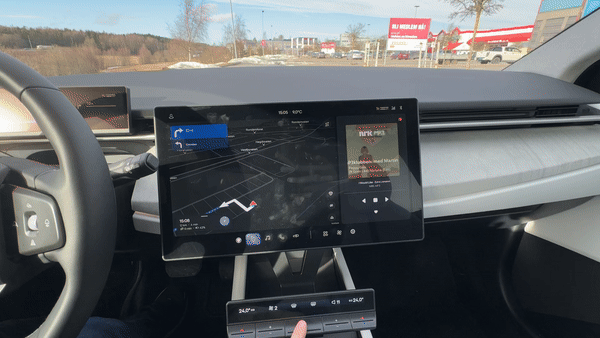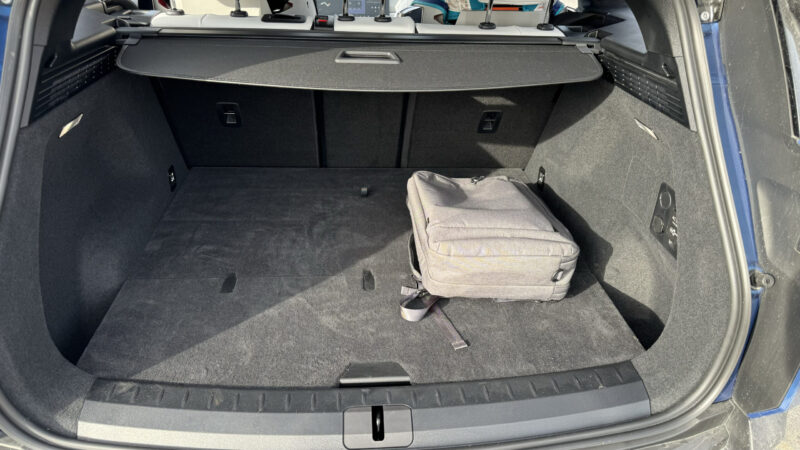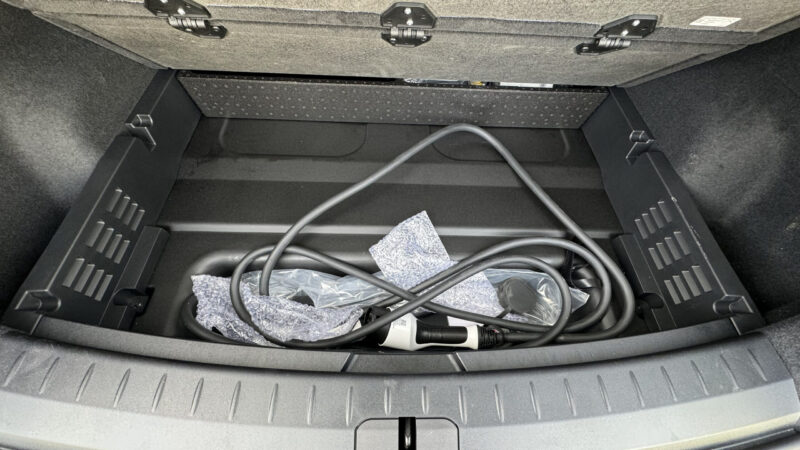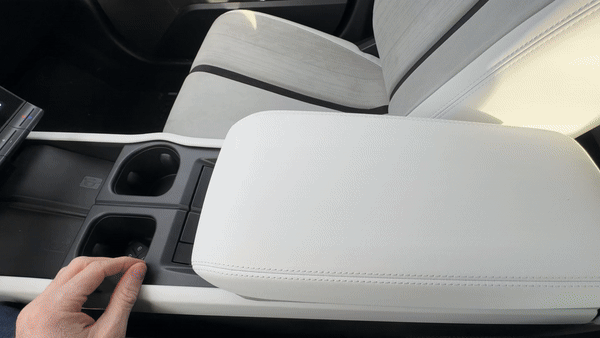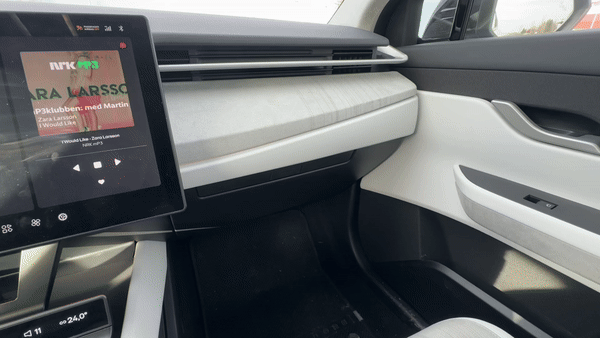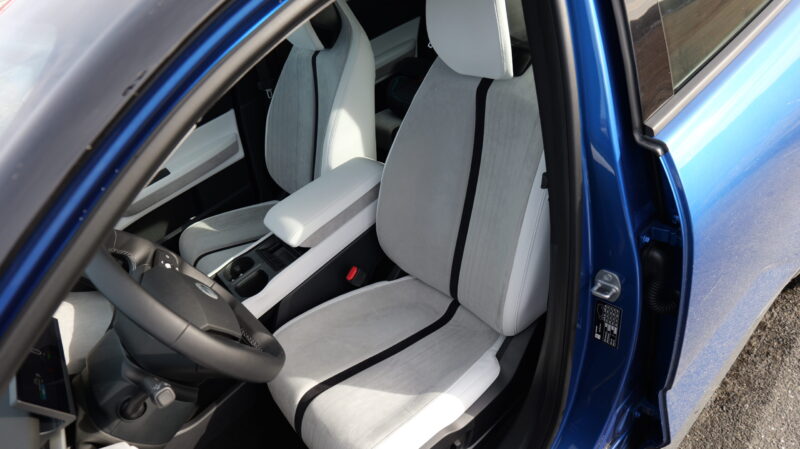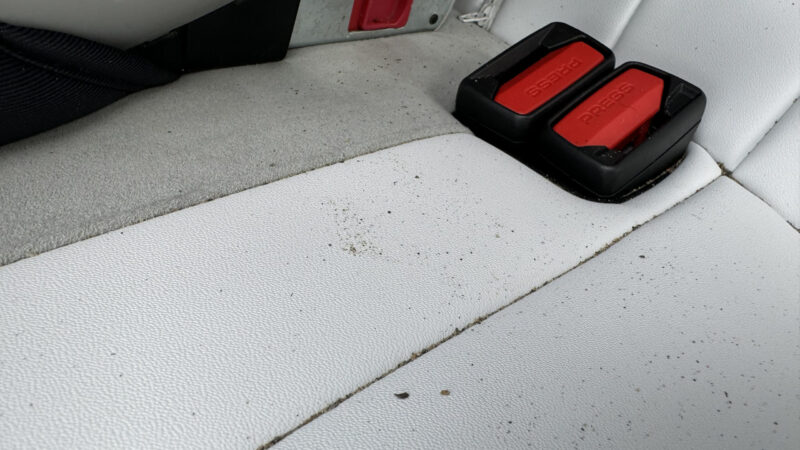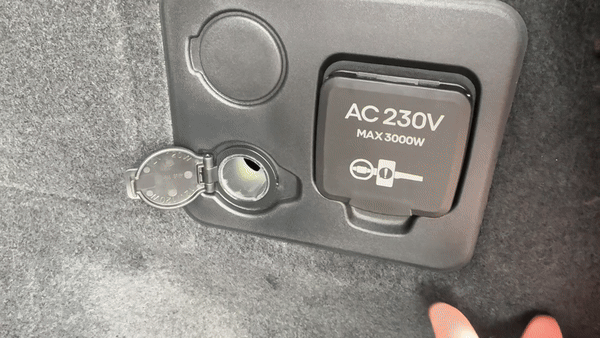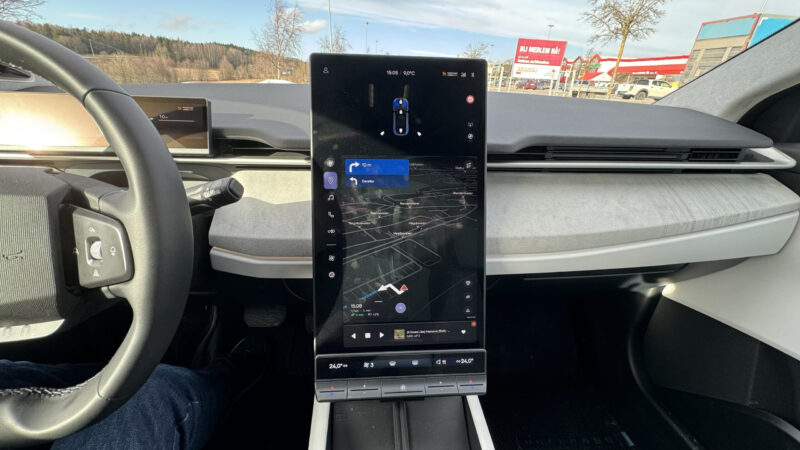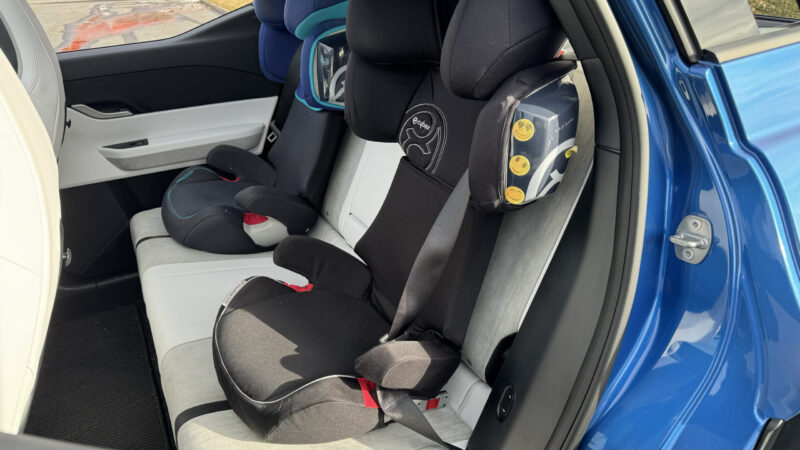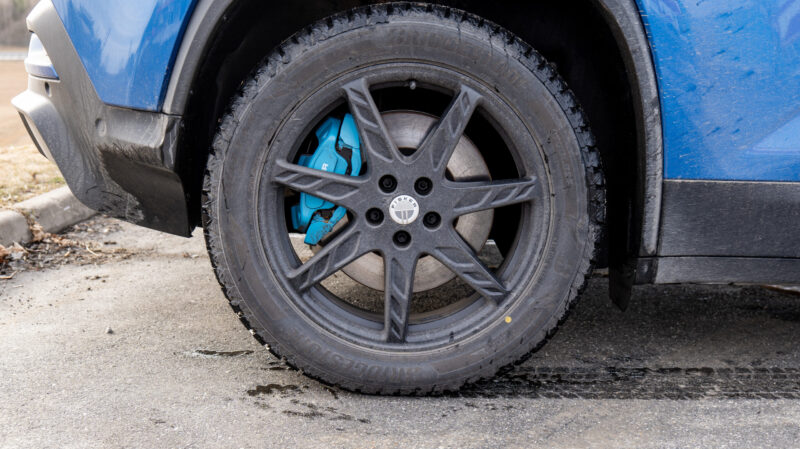Fisker Ocean is the car that will hopefully save the company from the huge financial challenges it is currently facing.
We’re talking about a spacious crossover SUV with real family car characteristics. Not least because of its large battery with 106 kWh net capacity, which is by far the largest in its class. Its closest competitors have at least 20 per cent less energy storage.
Such a large battery on a medium-sized car should be reflected in the range. And Fisker is not shy about stating a range of 701 crazy kilometres! These are WLTP figures and will be lower in practical driving, but the same applies to all electric cars. So we should be dealing with a really hefty long-distance horse.
In terms of both size and price, the Fisker Ocean is a direct challenger to well-known models such as the Tesla Model Y, Volkswagen ID.4, Skoda Enyaq and Hyundai Ioniq 5. The four-wheel drive and fully equipped Extreme edition, which is tested here, costs almost exactly 63,600 without winter tyres and colour options. It is also available with front-wheel drive.
California mode
If the look of the Fisker Ocean isn’t exactly unique, it’s definitely distinctive. With a gently sloping roof from all the way at the front to the far rear, almost all the way to the end of the rear wheel, before the rear end cuts off abruptly. With rounded elements, for aerodynamic reasons.
What’s really special, however, is the roof, which is all glass, and also has in-built solar cells for extra range in sunny seasons. Although the latter is debatable, given the extra weight it adds.
But the extra special thing about the roof is that you can open the entire roof at the touch of a button. This also opens all the side windows, including the small windows by the C-pillars and even the rear windscreen! In warmer climates and especially on hot summer days, this can be nice, although it’s probably primarily a cool gimmick.
Being able to open the rear windscreen is really nice, especially if you’re loading something into the car that sticks out just too far to close the tailgate. For shorter trips, of course, and only if you make sure to properly secure the item inside. But at least then you don’t have to drive with the tailgate ajar.
Technology and features
There’s no shortage of modern technology inside Ocean. Wireless charging for two phones, USB-C fast charging both front and rear, and the car even has a dining tray for both driver and side passengers.
Flip the switch on the rear-view mirror and you suddenly get a rear video view, which is great if you’re using the headrest in the rear centre seat or the rear window is full of dirt (no, it doesn’t have a windscreen wiper).
The 360-degree camera shows your surroundings from all angles on the screen, but you can only select one angle at a time. In practice, this means using a reversing camera. Which can do both regular angle and wide angle.
Personally, I’m most comfortable with the regular angle, which is plenty wide too.
The car can also reverse the power (V2L), via a socket in the boot. There you can extract up to 3 kW, enough to run most power tools and appliances, including the airfryer. Brilliant!
Hollywood mode
The large, high infotainment screen provides a good overview when driving with a map and displays information about the radio channel or streaming service. There’s also built-in Spotify and TuneIn internet radio, as well as Bluetooth connectivity.
Then a new trick: Press and hold the centre button under the screen and it suddenly swivels to a horizontal position. This also opens up a new submenu, and services such as YouTube, Apple TV+, Disney+ and Prime Video suddenly appear. This means you can enjoy a film or TV series while parked. Great!
The sound system also sounds great. The sound is nice and open, and there’s enough power to crank up the volume when listening to your favourite music. On film, you get a great surround feeling, with an impressively large and seamless panning of the sound over the listener’s head.
When you start driving, the screen swivels back to a vertical position. Cool.
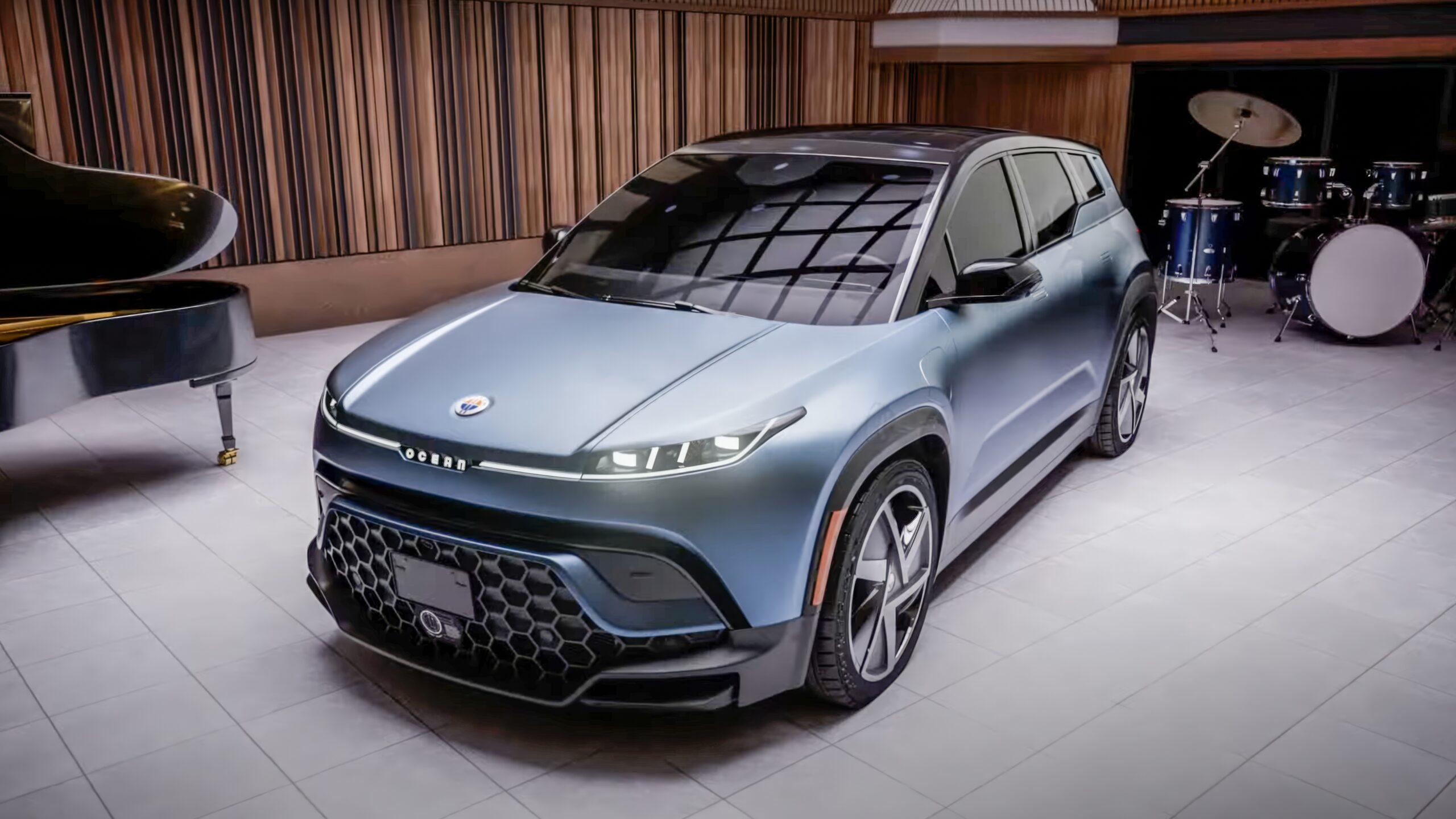
Interior
Like many others, Fisker uses sustainable interior materials, including recycled fishing nets, old clothes and recycled rubber and plastic.
The test car has white leatherette seats. It took me exactly one hour after delivering the car to get the back seat covered in sand and mud when I picked up my youngest son from daycare. So if you have ambitions to use this as a family car, don’t fall for the temptation of a white interior.
The Fisker Ocean is lightning fast
0-100 km/h is done in under four seconds. That’s almost the same as the Tesla Model Y Performance, and if you’ve never tried a car this fast before, it’s a bit of a shock to squeeze the throttle… sorry, the watt pedal. The seat back pushes in from behind, tunnel vision narrows and the grin around your mouth is at its widest!
Fisker Ocean provides a special driving experience. The fierce acceleration has already been mentioned. But it’s also part of the story that the car, with its curb weight of 2.46 tonnes, is 450 kilos heavier than the Model Y Performance. This is noticeable in the handling, as it doesn’t behave quite as instantaneously when accelerating. Instead, it hesitates for a moment before suddenly accelerating. It’s comparable to the time it takes a petrol turbo to build up the power to pull the car up to speed, only more immediate.
Ocean is built on a front-wheel drive platform, with an additional engine at the rear for all-wheel drive. Most of the time it rolls on the road is with front-wheel drive. The rear wheels come in when needed.
However, when accelerating on wet roads or sandy tarmac, I notice that the rear wheels take a while to get going. This is also true in Hyper driving mode, which Fisker calls its sports mode. The car starts by spinning the front wheels, before the rear wheels also come in and the whole thing stabilises. It also seems to pull more on the front wheels than the rear wheels, even when the four-wheel drive is active.
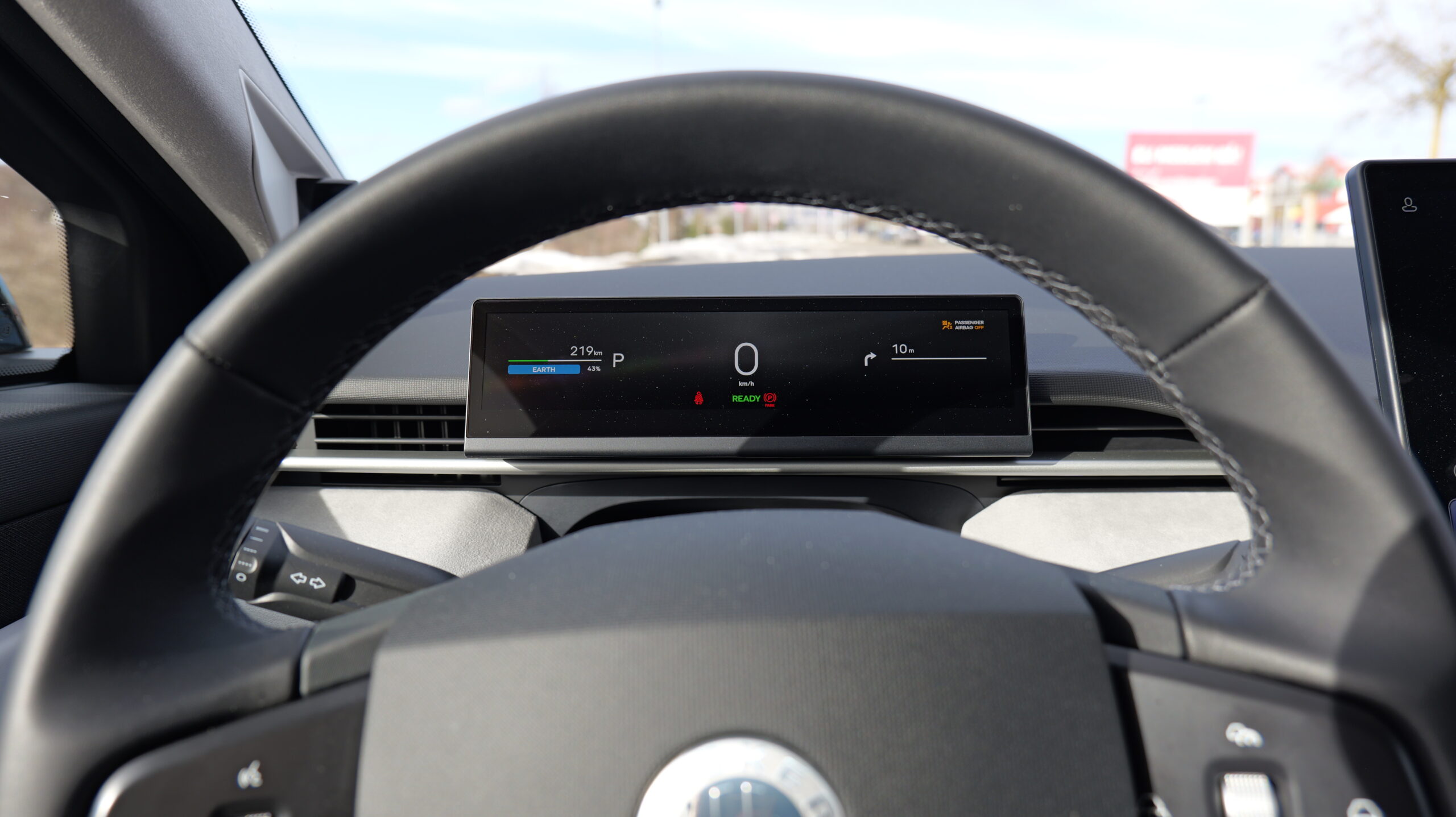
Range
The car has a gigantic battery with 113 kWh gross and 106.5 kWh net. This means a class-leading range of over 700 kilometres! Consumption is then said to be 18 kWh/100 km. Which is a slightly above average consumption for cars of a similar size.
I tested the car in temperatures around 0 degrees centigrade. You lose a little compared to the summer weather, but it should not be many per cent. The “guessometer” also starts out showing a range of over 700 kilometres when you start driving with a full battery. But unfortunately, it counts downwards a lot faster than the range travelled counts upwards.
When the battery was down to 43 per cent, the car showed 219 km of range left. If this is correct, we are just over 500 kilometres in actual range. This is in line with what other reviewers have experienced. The range in isolation is actually very good, and longer than what I get out of my Tesla Model Y Performance. But it’s almost 30 per cent below the stated range, and that gives an actual consumption of around 2.3 kWh per mile (23 kWh/100km). Much of the reason is the extra weight the car gains with the large battery.
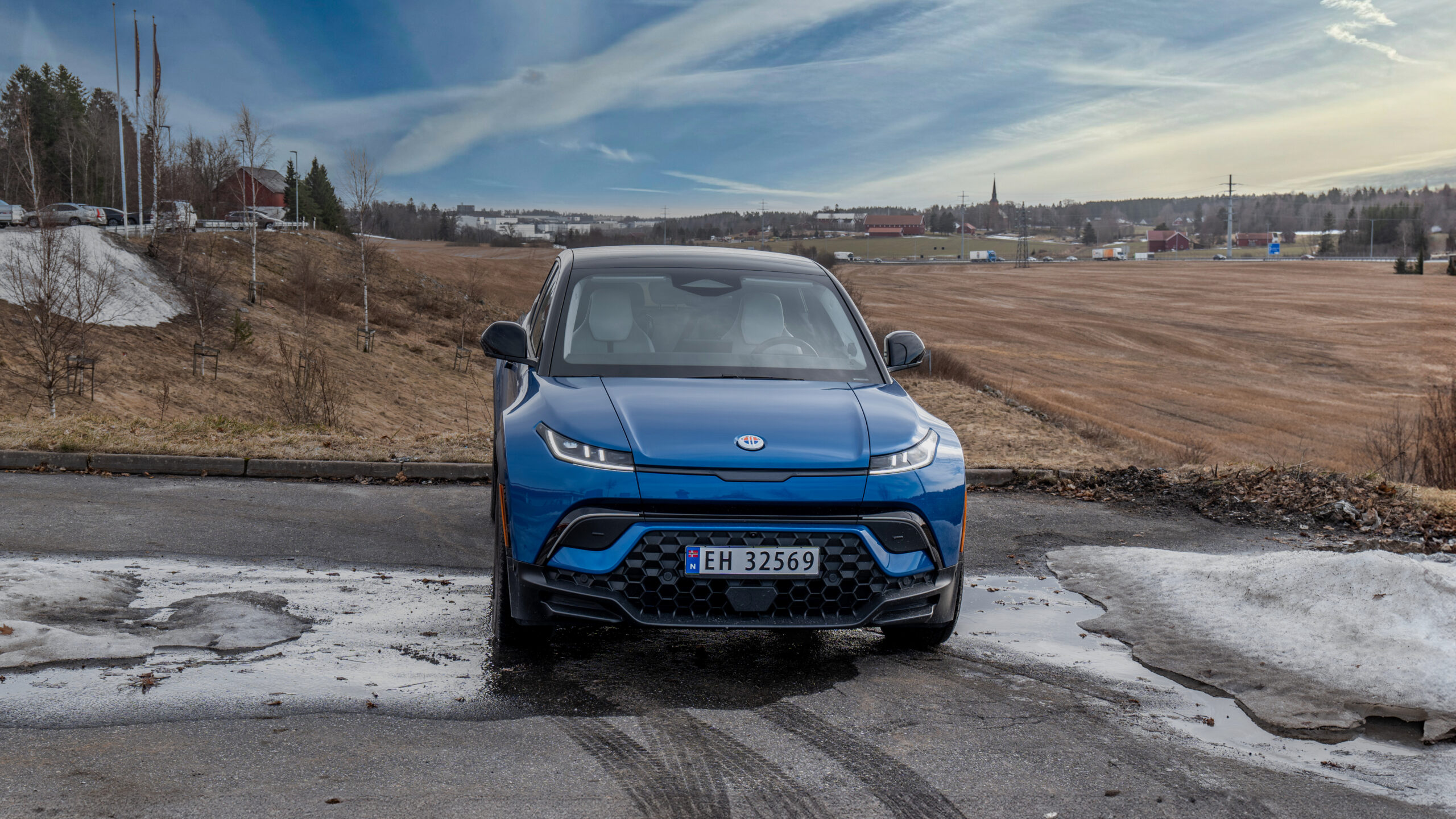
Overzealous ESP
The anti-skid system, or ESP, is overly active – even in Hyper mode. If you’re entering a roundabout, or entering a road at a T-junction, you’ll have to wait until you have a good gap. Don’t take the chance, because if the wheels slip even slightly, the ESP will kick in and prevent the car from moving forward until it has full grip again. Meanwhile, traffic from the side is coming fast.
Most drivers take it for granted that you should wait until it becomes clear, but those who drive around in fast cars can easily believe that they need shorter time windows. In the Fisker Ocean, I certainly wouldn’t bet on it. The combination of an eager ESP and an unusually slow reaction to the power pedal does not invite wild driving.
However, the acceleration is very nice to have when overtaking straight ahead. Then you fly past and get back into your lane quickly and safely.
Komfort og brukervennlighet
Fisker Ocean sikter mot å tilby en komfortabel og praktisk løsning for både familier og enkeltpersoner. Det indre rommet er gjennomtenkt designet, og tilbyr god plass for både passasjerer og bagasje. Nesten 500 liter i bagasjerommet, og over 600 medregnet det ekstra rommet under gulvet. Ingen frunk her, Fisker har i stedet prioritert å få senket gulvet mest mulig ved å flytte endel innmat til under panseret.
Baksetene er romslige nok. Når jeg har satt førersetet som jeg vil ha det, kan jeg fint få plass i setet bak ryggen. Gulvet kommer litt høyere opp enn for eksempel med Tesla Model Y, så en høy person får ingen lårstøtte. Men ingen skal klage på plassen her. Bilen er meget fornuftig innredet plassmessig.
Hva komfort angår, har jeg et par ting. For, joda, bilen er helt fin å kjøre. Men jeg synes den er litt mykt satt opp til å ha den ytelsen den har. Hvis det er gjort av komforthensyn, så lurer jeg litt på hvorfor setene samtidig er så harde. De har også begrenset med innstillingsmuligheter, jeg får ikke stilt setet til å gi skikkelig lårstøtte. På lengre turer blir jeg rett og slett litt mør i rumpeballene.
Rattet har også en litt merkelig, kantete form, som jeg personlig ikke får til å ligge spesielt godt i hendene. Akkurat det er smak og behag, men for min del reagerte jeg på det.
Bugs
Finally, it must be said that the car has a number of bugs now at the start. I know Fisker is on the case and will rectify this in future updates, most hopefully very soon. But it still needs to be mentioned.
Firstly, adaptive cruise control was not ready, so I only got to test with regular cruise control. You know, the kind that needs to be manually adapted to the traffic. Automatic lane keeping was also not available, only evasive manoeuvres if the car thought you were scarily close to the roadside. There were also some false alarms.
The car may suddenly get the idea that the loading hatch is open, or a radar sensor may stop working.
When I put the car in park with the lever on the right-hand side of the steering wheel and stay in the car, I’m not always allowed to continue driving. The car suddenly won’t come out of park until you have either stopped it completely, locked it and then opened it again, or you have to manually release the parking brake further down to the left of the steering wheel.
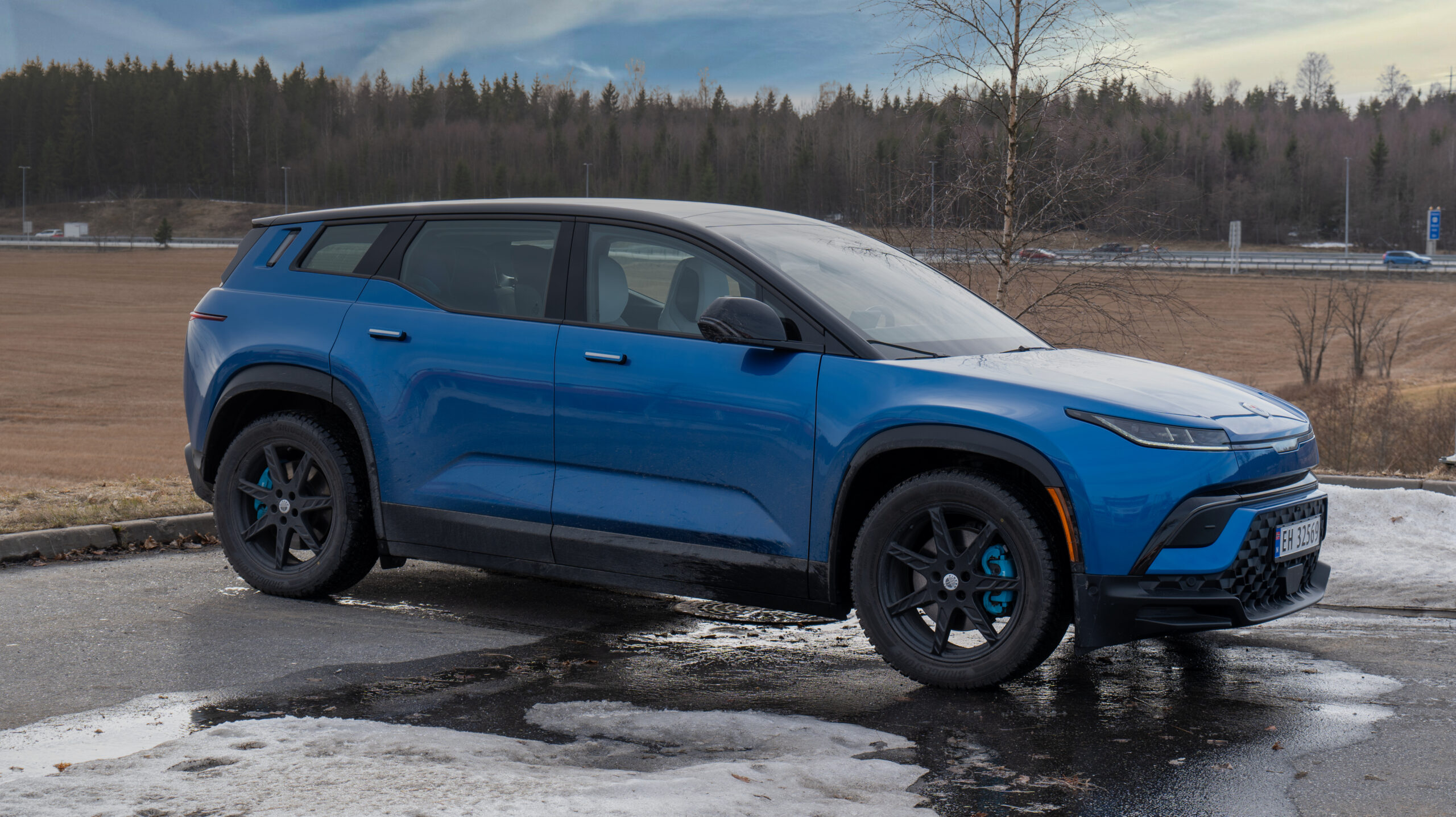
Conclusion
This test of the Fisker Ocean is based on a slightly unfinished car, and we know Fisker is working on fixing bugs. But the car is for sale, and this is how it is for those who have got their car now.
The car is a contender in the mid-size segment, and is reasonably priced in relation to both performance and space. The comfort is just okay, and the driving characteristics do not quite match the engine performance (the car is best when travelling straight ahead).
Range is good, but should have been even better with such a large battery.
That said, this is still definitely a cool car with several clever solutions. Once the bugs are ironed out, it will certainly be an exciting contender in the field.
Caveats:
Fisker is currently preparing for the possibility that it may have to file for bankruptcy protection, due to major financial problems. A restructuring of the company is necessary, but no one knows what the outcome will be yet. We can therefore not in good conscience recommend buying this car yet, until we know the outcome of the ongoing financial crisis the company finds itself in.

We think
Range, powerful performance, and lots of cool features. Plenty of space, and great for everyday driving. Some bugs that need to be fixed in OTA updates. High consumption. Under-steered and too aggressive ESP when pressed.
63590 €
Specifications
- Equipment package: Extreme
- Range: 701 km (WLTP)
- Battery capacity: 113 kWh (gross) / 106.5 kWh (net)
- Charging capacity: 200 kW DC / 11 kW AC
- Power output: 351.5 kW / 478 HP
- 0-100 km/h: 3,9 s
- Kerb weight: 2464 kg (empty weight)
- Authorised total weight: 3974 kg
- Max. permissible trailer weight: Up to 1820 kg (with brakes)
- Number of speaker drivers: 15 + subwoofer
- Amplifier power: 575 W
- Speaker setup: 9.1.6
- Other: 17.1″ swivelling touchscreen, OTA updates, 6-way electrically adjustable front seats. Heated front and rear seats. Fisker Pulse sound system with ELS Studio 3D sound. 476 litres of luggage space, 3 kW V2L
- Web: fiskerinc.com
